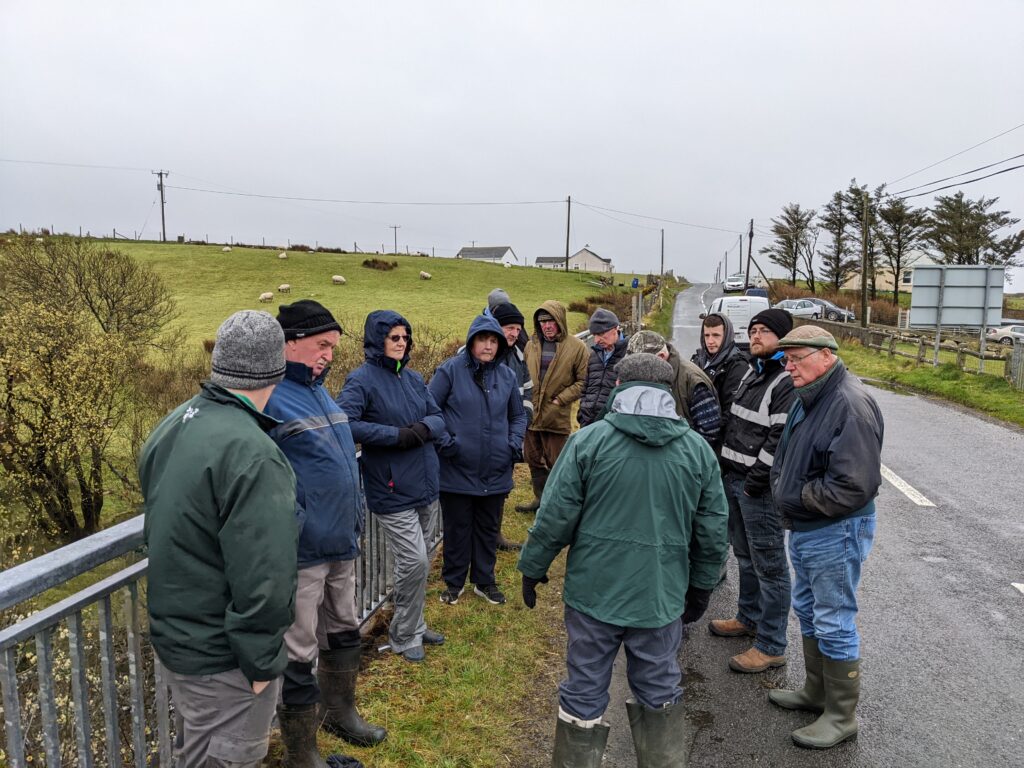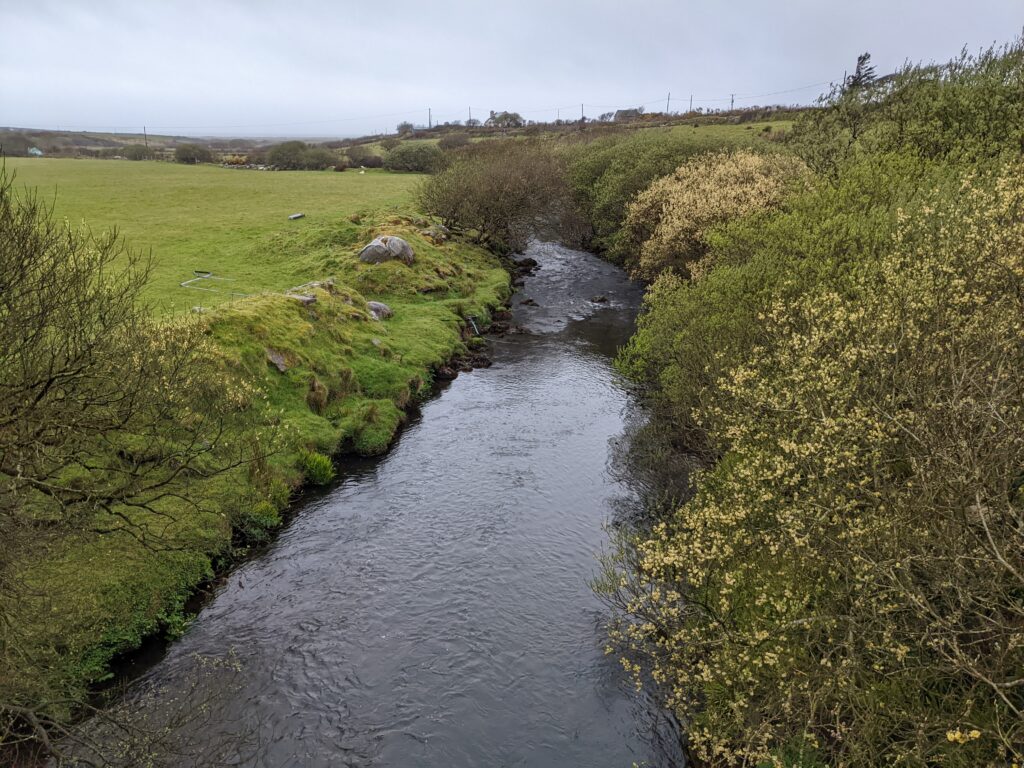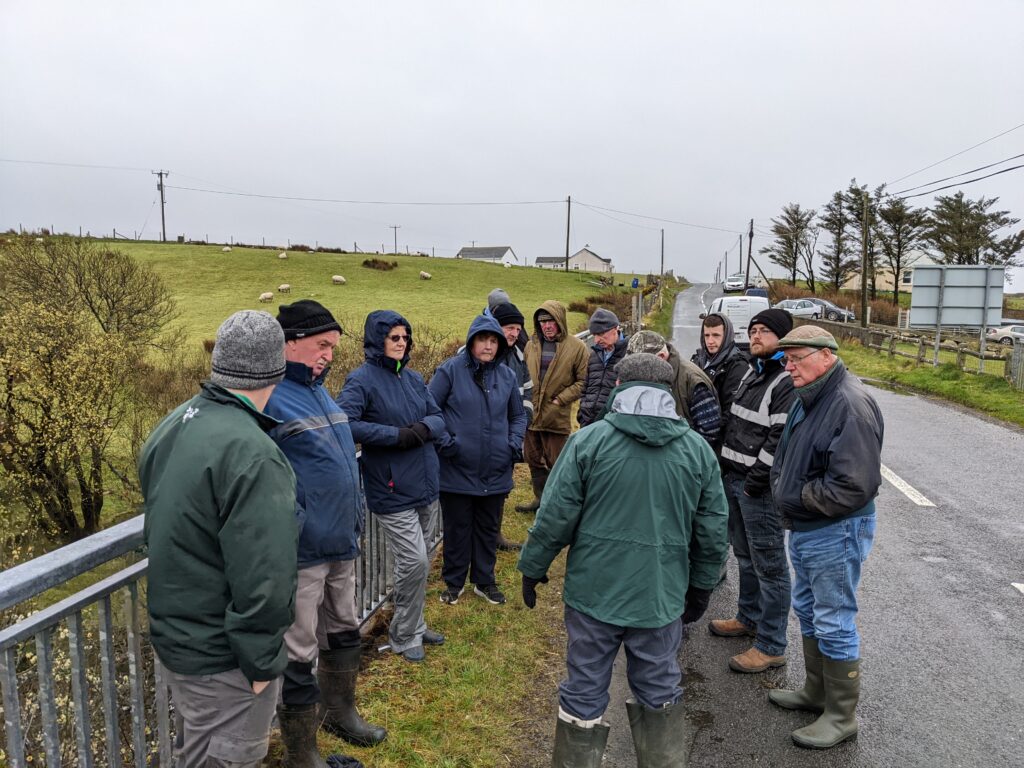On Monday 4 April 2022 we met up with 12 local farmers and landowners along the Carrowniskey River. The main topic was that of how to deal with flooding of local lands by the Carrowniskey River following heavy rainfall. With climate change such flooding events can only become more frequent in winter, although more frequent droughts are also likely. We mentioned natural flood control measures – particularly measures to slow the flow in the upper catchment and smaller side streams. Also soft engineering approaches to stabilising eroded banks – such as the willow rods used on the Glenummera River, which we visited last October. We had noted on a previous visit to Glenkeen that the upper catchment is not in the best of condition and lacks trees which contribute to the flashiness of the Carrowniskey.


Rosarie Tiernan asked her fellow landowners if they were interested in taking a coordinated approach to the flooding. A survey of the entire river was suggested in order to get a firm idea of where the main problems lie and what can be done to reduce the height of the peak floods. We suggest that such a survey can form the last part of Mayo Communities Caring for Water programme– we will point the group to published river flow and rainfall data, topographical maps, suggest walking the river, photographing the issues such as bank erosion and getting the group to put funding proposals together aimed at mitigation measures and ongoing sustainable management programmes.



After the main meeting on the bridge at Carrowniskey we sampled the macroinvertebrates at the broken bridge upstream of Roonagh Lough. There was quite a decline in the ecological condition here compared with that in the upper catchment at Glenkeen with significant algal growths here indicating some nutrient enrichment. The lower section of the catchment had extensive recent slurry spreading and perhaps better buffer zones are required.